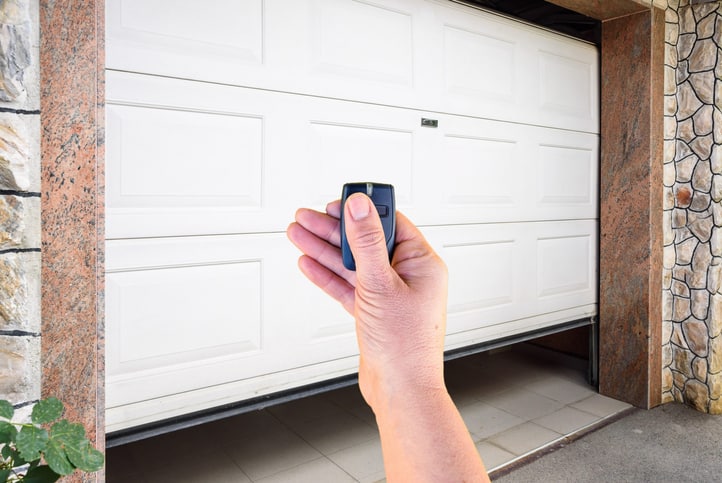A noisy garage door can disrupt the peace in your home and signal underlying issues that could worsen over time.
Identifying the cause and addressing the problem promptly ensures smoother operation, extends the door’s lifespan, and restores quiet functionality.
Here’s a comprehensive guide to diagnosing and resolving noisy garage doors.
Common Causes of Noisy Garage Doors
Before tackling the noise, it’s essential to understand its source. Here are the most common reasons your garage door might be causing a ruckus:
- Lack of Lubrication
- Moving parts, such as rollers, hinges, and tracks, require regular lubrication to function quietly. Without it, metal components grind against each other, causing squeaks and rattles.
- Loose Parts
- Over time, vibrations from regular use can loosen bolts, nuts, or screws in the garage door mechanism. Loose hardware can lead to rattling or banging sounds during operation.
- Worn-Out Rollers
- Rollers help the door glide smoothly along the tracks. If they’re made of metal or are damaged, they can create a grinding noise as they move.
- Damaged Tracks
- Bent or misaligned tracks can cause the rollers to struggle, leading to scraping or screeching sounds.
- Worn Springs
- Torsion or extension springs help lift and lower the door. If these springs are worn, they can creak or snap during use.
- Improper Installation
- Poorly installed garage doors may strain the system, leading to various noises, including squeaks, rattles, or grinding.
- Old Garage Door Opener
- A noisy opener can amplify garage door noise. Older chain-driven openers are particularly loud compared to newer belt-driven models.
Steps to Resolve Noisy Garage Doors
Now that you know the potential culprits, follow these steps to resolve the issue and enjoy a quieter garage door:
1. Inspect and Tighten Hardware
- What to Do: Use a wrench or socket set to tighten loose nuts, bolts, and screws on the door and tracks.
- Pro Tip: Avoid overtightening, as it can strip the bolts or warp the tracks.
2. Lubricate Moving Parts
- What to Do: Apply a silicone-based lubricant or a garage door-specific spray to hinges, rollers, tracks, springs, and the opener chain or belt.
- Pro Tip: Avoid using WD-40 as it’s a cleaner, not a lubricant, and can attract dirt and grime over time.
3. Replace Worn-Out Rollers
- What to Do: Upgrade to nylon rollers, which are quieter than metal ones. If the rollers are damaged, cracked, or excessively worn, they should be replaced.
- Pro Tip: Replacing rollers may require professional assistance, as it involves detaching the door from the tracks.
4. Check and Align Tracks
- What to Do: Inspect the tracks for dents or misalignment. Use a rubber mallet to gently straighten bent sections or adjust track brackets for proper alignment.
- Pro Tip: Clean the tracks with a damp cloth to remove dirt and debris that could contribute to noise.
5. Inspect and Replace Springs
- What to Do: Listen for creaking or snapping sounds that indicate worn springs. Replace them if necessary.
- Pro Tip: Spring replacement is dangerous due to high tension and should always be handled by a professional.
6. Upgrade the Garage Door Opener
- What to Do: If your garage door opener is outdated, consider replacing it with a modern belt-driven or direct-drive model, which operates more quietly.
- Pro Tip: Look for openers with a soft-start/stop feature to reduce operational noise further.
7. Install a Vibration Isolator
- What to Do: Attach vibration isolators or rubber pads between the opener and the mounting brackets to absorb vibrations and minimize noise.
- Pro Tip: These are easy to install and can significantly reduce noise transmission to the ceiling.
8. Add Noise-Reducing Features
- What to Do: Install weatherstripping on the bottom of the garage door to reduce noise when the door closes. Additionally, consider insulating the door with soundproofing materials.
- Pro Tip: Insulated doors not only reduce noise but also improve energy efficiency.
Preventative Maintenance Tips
To keep your garage door running quietly and smoothly, regular maintenance is key. Here’s how you can prevent future noise issues:
- Schedule Regular Inspections: Check the door’s components every three to six months for signs of wear or damage.
- Clean Tracks and Rollers: Wipe down tracks and rollers periodically to remove debris and dust buildup.
- Reapply Lubrication: Ensure moving parts are lubricated every six months to prevent grinding and squeaking.
- Balance the Door: Test the door’s balance by disconnecting the opener and manually lifting it halfway. If it doesn’t stay in place, the springs may need adjustment.
- Professional Tune-Ups: Have a professional inspect your garage door annually to identify and address potential issues early.
When to Call a Professional
While some noise-related fixes can be handled as DIY projects, certain repairs are best left to professionals. Seek expert assistance in the following scenarios:
- The door feels heavy or is difficult to lift manually.
- You hear a loud snapping noise, indicating a broken spring.
- The opener chain or belt is sagging or excessively noisy despite lubrication.
- The tracks are severely bent or misaligned.
Conclusion
Noisy garage doors can be a nuisance, but identifying and resolving the issue doesn’t have to be overwhelming.
With proper inspection, regular maintenance, and timely repairs, you can enjoy a quieter and more efficient garage door.
Whether it’s tightening a bolt, lubricating parts, or upgrading your opener, these steps will help you restore peace to your garage and ensure the longevity of your door system.
If the noise persists despite your efforts, don’t hesitate to contact a professional garage door repair service for expert assistance.




